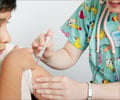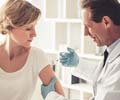World Immunization Week (WIW) is marked in the last week of April (24-30) and aims at promoting the use of vaccines in all age groups to prevent diseases. Immunization and the use of vaccines is the most successful public health intervention against disease prevention. According to the United Nations Children’s Education Fund (UNICEF), immunization saves up to 3 million children each year. Vaccines against diphtheria, tetanus, polio, measles, pneumonia and rotavirus diarrhea have saved children across the globe especially in developing countries.
In order to ensure equity in immunization, this year’s theme for WIW is “Close the Immunization Gap.” The Global Vaccine Action Plan (GVAP) has been endorsed by 194 member states of the World Health Assembly in May 2012. The key objective of GVAP is to prevent deaths due to lack of vaccines by putting in place universal access to vaccines across all communities by 2020.What is Immunization?
According to the World Health Organization (WHO), immunization is a process where a person acquires immunity or resistance to a particular disease through the administration of a vaccine. Vaccines stimulate the body’s immune system to protect the person from a particular infectious disease.Vaccines are cost-effective public health measures, which can save communities from virulent infectious diseases. Vaccines help protect marginalized and vulnerable communities who may not have adequate access to medical facilities.
History of Immunization
The world’s first vaccine was made by Dr Edward Jenner, a country doctor in Gloucestershire in England in 1796. He took pus from a cowpox lesion on a milkmaid’s hand and inoculated an eight-year-old boy, James Phipps. Six weeks later, he injected the boy with two more vaccines. The boy was unaffected by these exposures. Jenner’s experiment proved that the cowpox prevents humans from being infected by smallpox. He was the first to lay the foundation of the vaccine concept.The development of vaccines against various infectious agents has saved millions of lives across the world. The development of inactivated, passive tetanus vaccine saved many lives during World War II. Similarly, the advent of the polio vaccine helped prevent children from becoming disabled. Today, we have a range of vaccines for many infectious agents including pneumonia and hepatitis A and B. However, we still await two key vaccines against killer infections like HIV and malaria.
What is World Immunization Week (WIW)?
World Immunization Week (WIW) is marked in the last week of April (24-30) and aims at promoting the use of vaccines in all age groups to prevent diseases. Immunization and the use of vaccines is the most successful public health intervention against disease prevention.According to the United Nations Children’s Education Fund (UNICEF), immunization saves up to 3 million children each year. As per WHO statistics, the global death rate due to measles has dropped by 75%, 84% infants worldwide were vaccinated with 3 doses of diphtheria-tetanus-pertussis (DTP3) vaccine in 2013, and the same year, 129 countries had at least 90% coverage of the DTP3 vaccine (WHO statistics). Vaccines against diphtheria, tetanus, polio, measles, pneumonia and rotavirus diarrhea have saved children across the globe especially in developing countries. Vaccines against meningitis A, cervical cancer, hepatitis A and B are also part of the immunization plan for adults and adolescents.
WIW is an opportunity to raise public awareness on the importance of following immunization schedules for both children and adults against preventable infectious diseases. Immunizations are especially important in developing countries like India, Africa and some parts of Asia, where communities may not have easy access to medical facilities.
World Immunization Week Theme
Despite worldwide efforts to bring more children and adults under vaccine cover, WHO says that one in five children miss out on vaccines and an estimated 21.8 million infants missed out crucial vaccines in 2013. Many factors play a role in not receiving vaccines including insufficient information and education on vaccines, inadequate supply of vaccines and lack of access to public health services.In order to ensure equity in immunization, this year’s theme for WIW is “Close the Immunization Gap”. The Global Vaccine Action Plan (GVAP) has been endorsed by 194 member states of the World Health Assembly in May 2012. The key objective of GVAP is to prevent deaths due to lack of vaccines by putting in place universal access to vaccines across all communities by 2020.
- To strengthen and enhance routine immunization
- To strengthen vaccine programs against preventable diseases with polio eradication being the first milestone
- To introduce newer, improved vaccines
- To increase research on next generation vaccines and technologies
The 2014 World Health Assembly discussed several issues that need to be addressed to achieve the goal of an equitable immunization plan. Some of the points discussed are:
- Affordability of vaccines to all countries
- Technological transfer to manufacture vaccines locally at a lower cost
- Dissemination of information to the public to make informed decisions
Immunization in India
In India, the Routine Immunization (RI) program covers nearly 27 million infants and 30 million pregnant women. The full immunization program increased from 35.5% in 1992-93 to 61% in 2009. Yet out of 27 million children born each year, 7.2 million miss out vaccines. The central and state governments have been working in partnership to bring more children under vaccine cover. One such successful program is the Pulse Polio program. India has also achieved several wins in using life-saving vaccines to reduce or eliminate infectious diseases. Some of the key wins are:- Eradication of smallpox in 1980
- Polio-free from 2014
- Neo-natal tetanus eliminated in 18 states between 2003 and 2013










